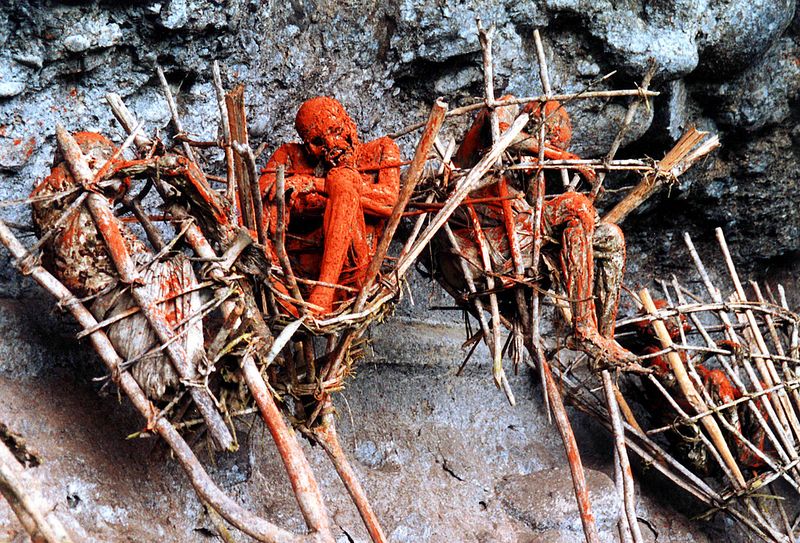We tend to associate mummies with ancient Egypt, but a lot of culture around the world practiced mummification. The Anga tribe of the Aseki region of Papua New Guinea is one of them. Anga’s mummies, however, aren't wrapped in bandages and placed in tombs. They are left in the open, high above a cliff, often overlooking the village where they once lived.
One of the most important process of mummification is the removal of moisture from the dead bodies, because water promotes decomposition, and a decomposed body cannot be preserved by mummification. Ancient Egyptians achieved this by covering the dead bodies with salt and mixture of spices that had great drying properties. The Anga tribe employed a more direct approach — they heated the dead bodies over a fire.

Photo credit: Michael Thirnbeck/Flickr
Read more »© Amusing Planet, 2015.









Comments